By Dan Weisz
A friend described her life in the pandemic as being “bored, but healthy and safe.” I definitely can relate. To deal with the boredom, at least I can run out find a place to look for birds. Last week I returned to Lakeside Park on the far SE of Tucson. It is a city park with a large lake stocked for fishing. The lake has an interesting history and origin https://en.wikipedia.org/wiki/Lakeside_Lake
A Great Blue Heron was at the lake. Undoubtedly, the fishing was good for him. Great Blue Herons eat nearly anything within striking distance. They will stand still waiting for prey to approach and then will strike with lightning speed
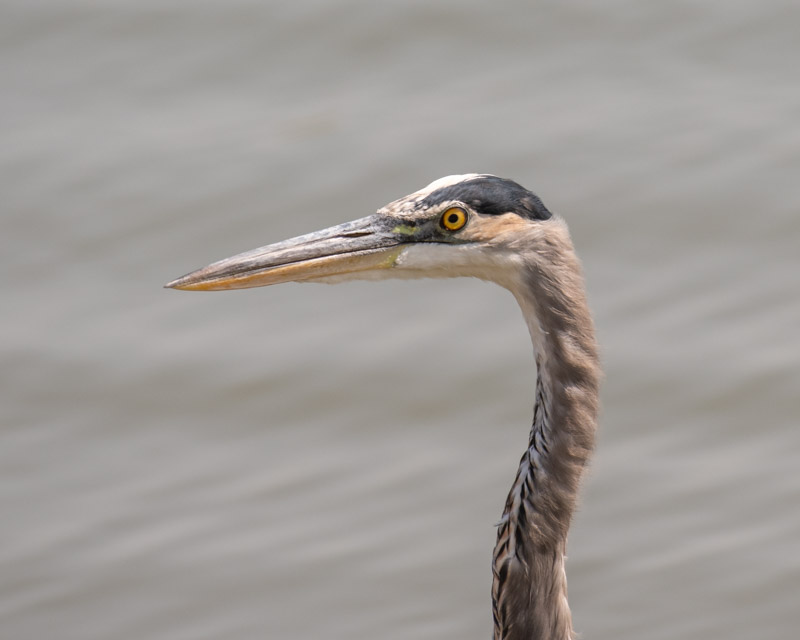
Great Blue Herons are birds, of course, so they will rest in trees.
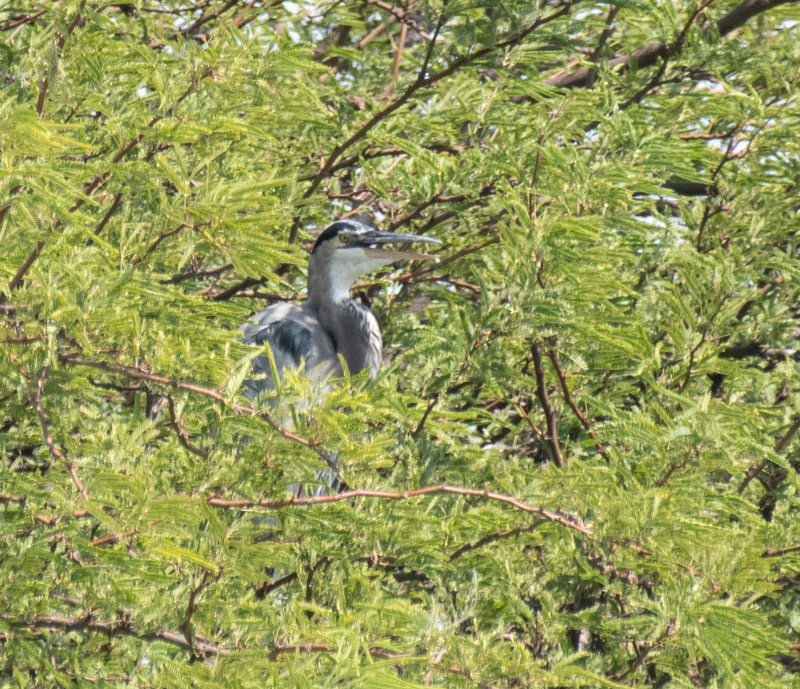
A Great Egret was also fishing nearby. Great Egrets are slightly smaller than the Great Blue Heron is. The Great Egret is the symbol of the National Audubon Society, which was founded to protect birds like the Great Egret from being killed for their feathers.
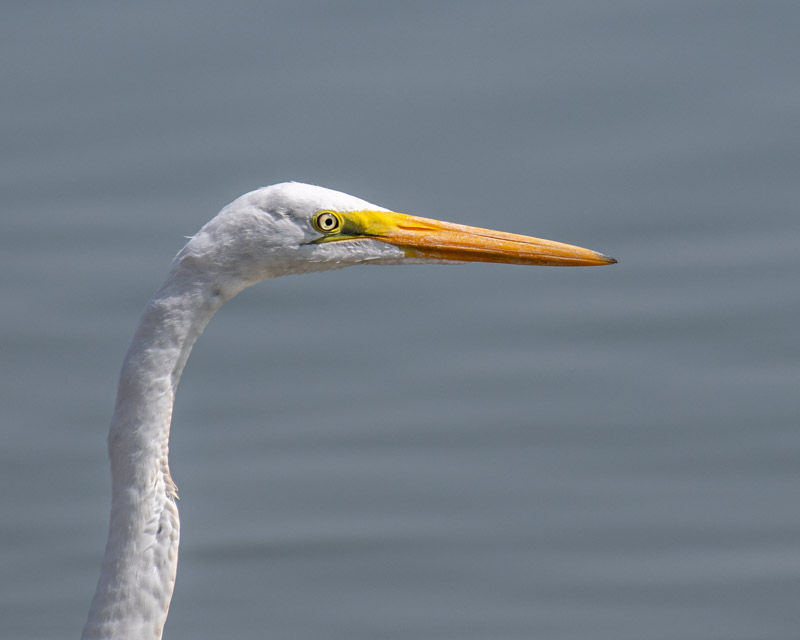
While I was watching the two large birds, a much smaller juvenile Black-crowned Night Heron flew across the lake. Juveniles have this brown streaky look. An adult will have a white/gray belly, a black back, and true to its name, a black cap. Also true to its name, they are most active at night.
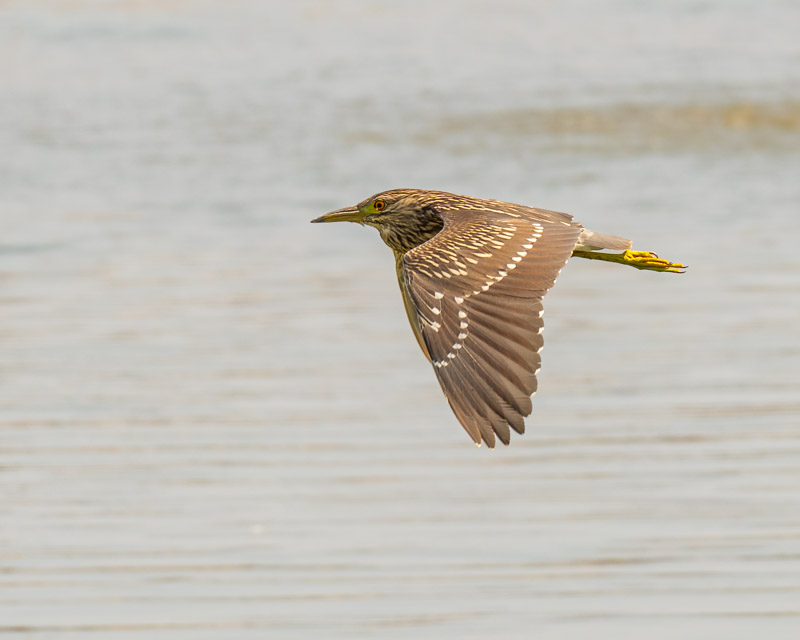
Like all city parks, Lakeside has trees scattered around. In the parking lot, I saw this Lark Sparrow perched in a mesquite. Lark Sparrows have a very distinctive facial pattern.
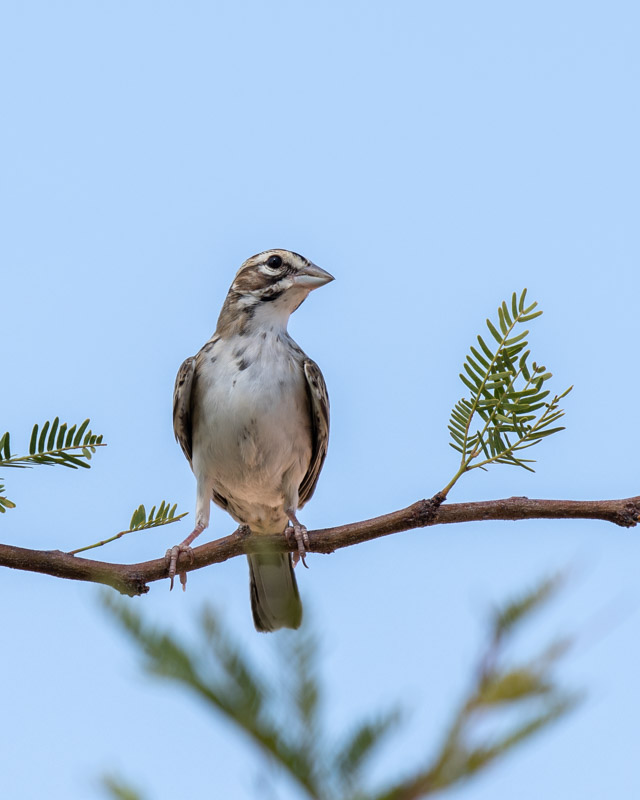
I spent an hour or so just sitting on a wall next to a Chinese Pistach Tree. The tree attracted quite a few birds and, as it was a very hot morning, sitting seemed like a good idea to me. A Cassin’s Vireo migrating through town was active in the tree. Cassin’s are songbirds with bold spectacles and a fairly thick bill.
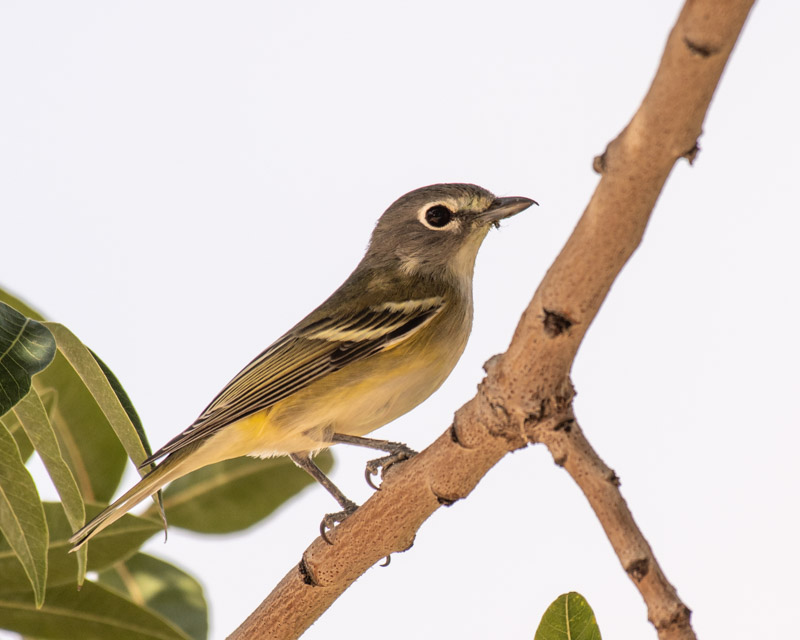
White Crowned Sparrows are returning to Tucson for the winter. Adults have black and white stripes on their heads while the stripes on immature birds are gray and brown. These sparrows are seed eaters and this one found many grass seeds under the pistachio tree.
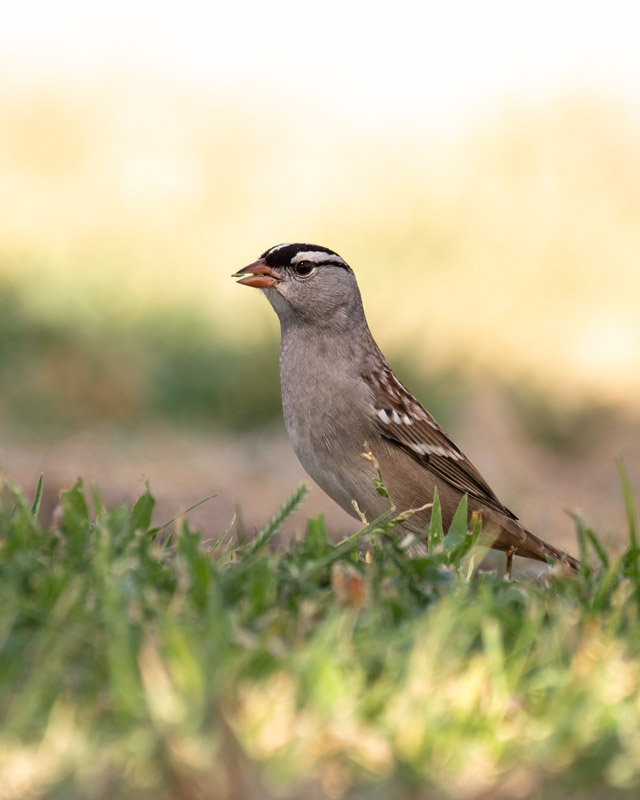
This Orange-crowned Warbler found a tasty ant. The warbler will spend summers at higher elevations in southern Arizona and can be seen around Tucson during the winter. They do have orange feathers on their crown but display them only when they are excited. I have never seen them so I have to trust that the name is accurate. Perhaps one day………
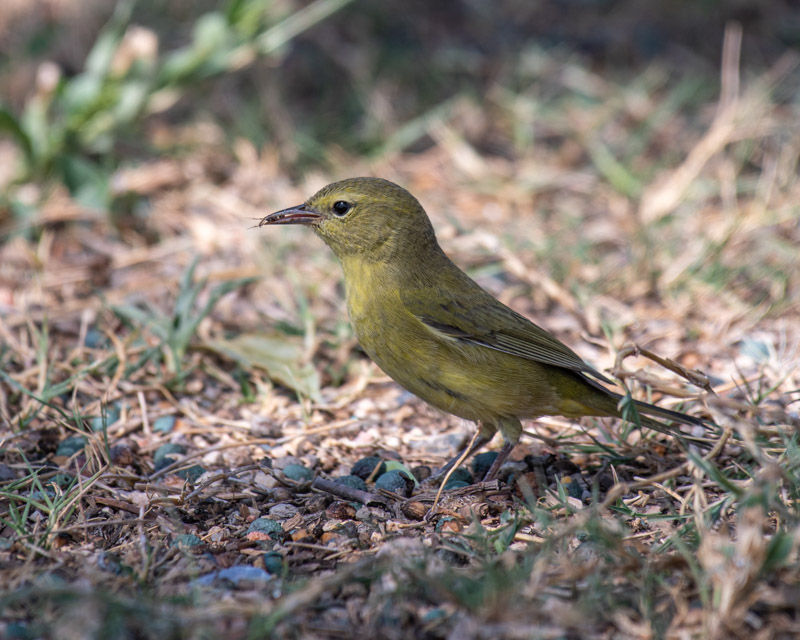
I think this is a Western Kingbird loading up on insects in the tree before heading south for the winter.
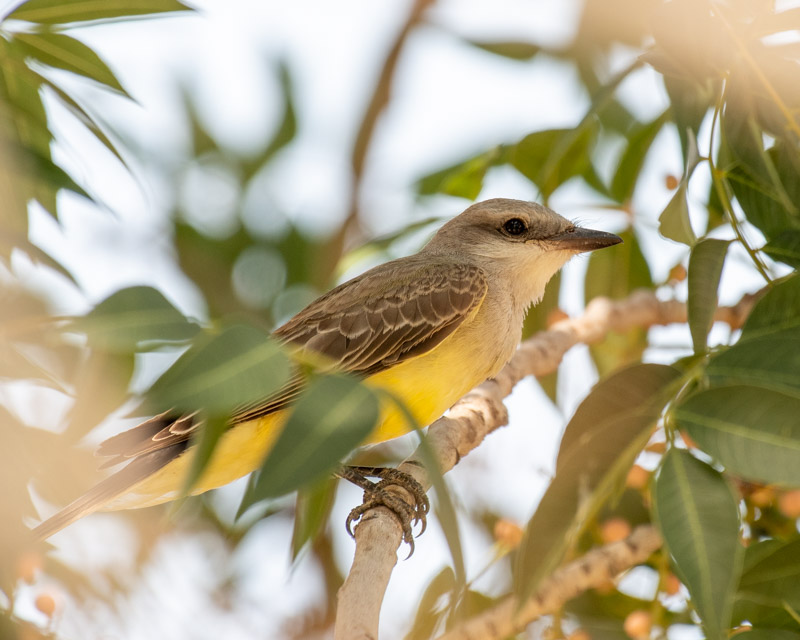
It was interesting to see so many yellowish birds that morning. Here is a female Summer Tanager. She might have been filling up on either the berries or the insects in the tree before heading south.
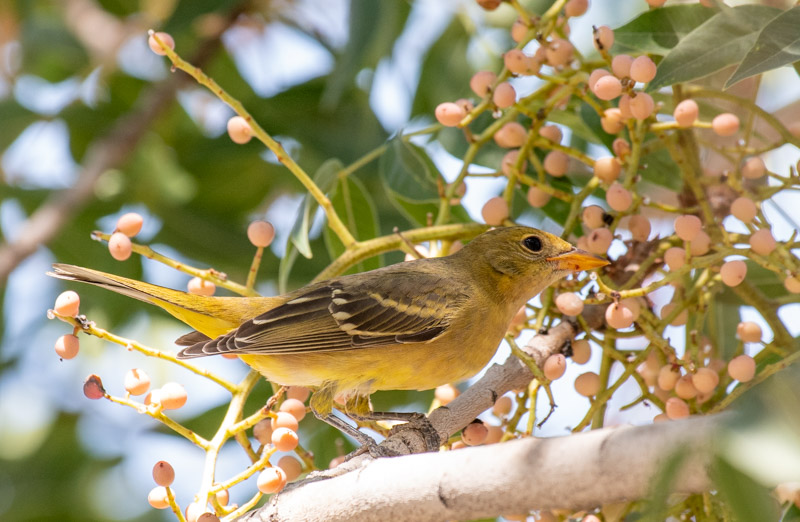
I was excited to see this Green-tailed Towhee deep inside the pistach tree. They are winter visitors but uncommon and their colors are striking. Usually I’ll see them on the ground where they spend time scratching at leaf litter to find food. They will hop forward and backward on both feet quickly to overturn debris in hopes of uncovering food.
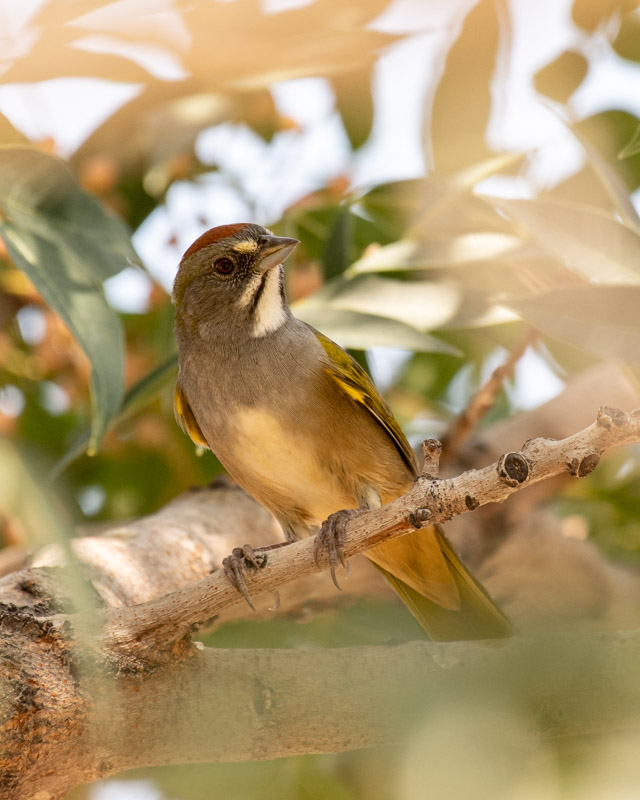
Sitting by the Pistach Tree was an hour well spent.
